DNA reveals the past and future of coral reefs
New DNA techniques are being used to understand how coral reacted to the end of the last ice age in order to better predict how they will cope with current changes to the climate. James Cook Univer

From 2005 to 2022, the main node of the ARC Centre of Excellence for Coral Reef Studies was headquartered at James Cook University in Townsville, Queensland (Australia)
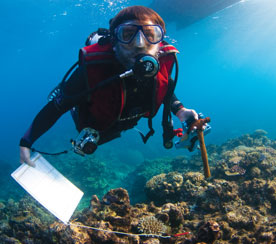
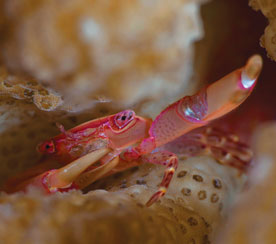
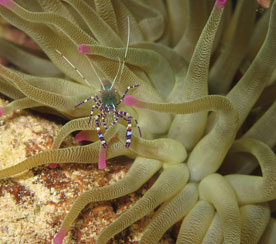
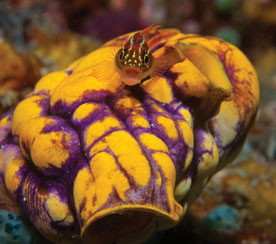
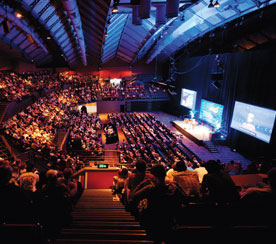
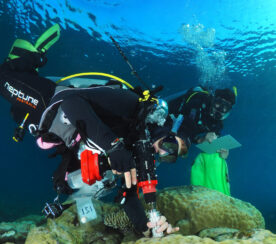
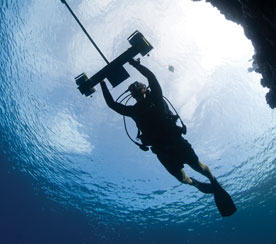

Abstract: Summer temperatures in February-April 2016 have caused severe and widespread coral bleaching in Australia. On the east coast, this is the third mass bleaching event for the Great Barrier Reef (GBR) and 93% of reefs have been affected. Compared to earlier mass bleaching in 1998 and 2002, 2016 is much more severe, with 50-80% coral mortality recorded on many northern reefs. The geographic footprint of each of the three events has been different, with each one explained by where the hottest temperatures occurred. Based on aerial and underwater surveys of >1000 reefs in 2016 and 650 reefs in 1998 and 2002, we can now identify reefs that have bleached 0, 1, 2 or 3 times, and examine their attributes. Over time progressively fewer GBR reefs have escaped bleaching, and because of the severity of the most recent event, hundreds of reefs have bleached for the first time in 2016. For the Great Barrier Reef and elsewhere, we have already entered an era when the return time of mass bleaching caused by global warming is shorter than the recovery time of long-lived coral assemblages.
Biography: Terry Hughes is the Director of the Australian Research Council’s Centre of Excellence for Coral Reef Studies, headquartered at James Cook University in Townsville. Terry was elected a Fellow of the Australian Academy of Sciences in 2001. He has been awarded many prizes, including the prestigious Darwin Medal of the International Society for Coral Reef Studies in 2008. In 2014, he was awarded an Einstein Professorship by the Chinese Academy of Sciences. Terry has studied the Great Barrier Reef for longer than he cares to remember, and has witnessed firsthand how it has continued to be impacted by dredging, pollution and climate change. A recurrent theme in his studies is the application of new scientific knowledge towards improving management of marine environments, especially in Australia.
New DNA techniques are being used to understand how coral reacted to the end of the last ice age in order to better predict how they will cope with current changes to the climate. James Cook Univer
A new study on the effects of climate change in five tropical countries has found fisheries are in more trouble than agriculture, and poor people are in the most danger. Distinguished Profess
James Cook University researchers have found brightly coloured fish are becoming increasingly rare as coral declines, with the phenomenon likely to get worse in the future. Christopher Hemingson, a
Researchers working with stakeholders in the Great Barrier Reef region have come up with ideas on how groups responsible for looking after the reef can operate more effectively when the next bleaching
Abstract: As marine species adapt to climate change, their heat tolerance will likely be under strong selection. Individual variation in heat tolerance and its heritability underpin the potential fo
Abstract: The Reef Ecology Lab in KAUST’s Red Sea Research Center explores many aspects of movement ecology of marine organisms, ranging from adult migrations to intergenerational larval dispersal
Abstract: Macroalgal meadows are a prominent, yet often maligned component of the tropical seascape. Our work at Ningaloo reef in WA demonstrate that canopy forming macroalgae provide habitat for ad
Abstract: Sharks are generally perceived as strong and fearsome animals. With fossils dating back at least 420 million years, sharks are not only majestic top predators but they also outlived dinosa
Abstract: Connectivity plays a vital role in many ecosystems through its effects on fundamental ecological and evolutionary processes. Its consequences for populations and metapopulations have been
Abstract: Evolution of many eukaryotic organisms is affected by interactions with microbes. Microbial symbioses can ultimately reflect host’s diet, habitat range, and even body shape. However, how
Abstract: The past few years have seen unprecedented coral bleaching and mortality on the Great Barrier Reef (GBR) but the consequences of this on biodiversity are not yet known. This talk will expl